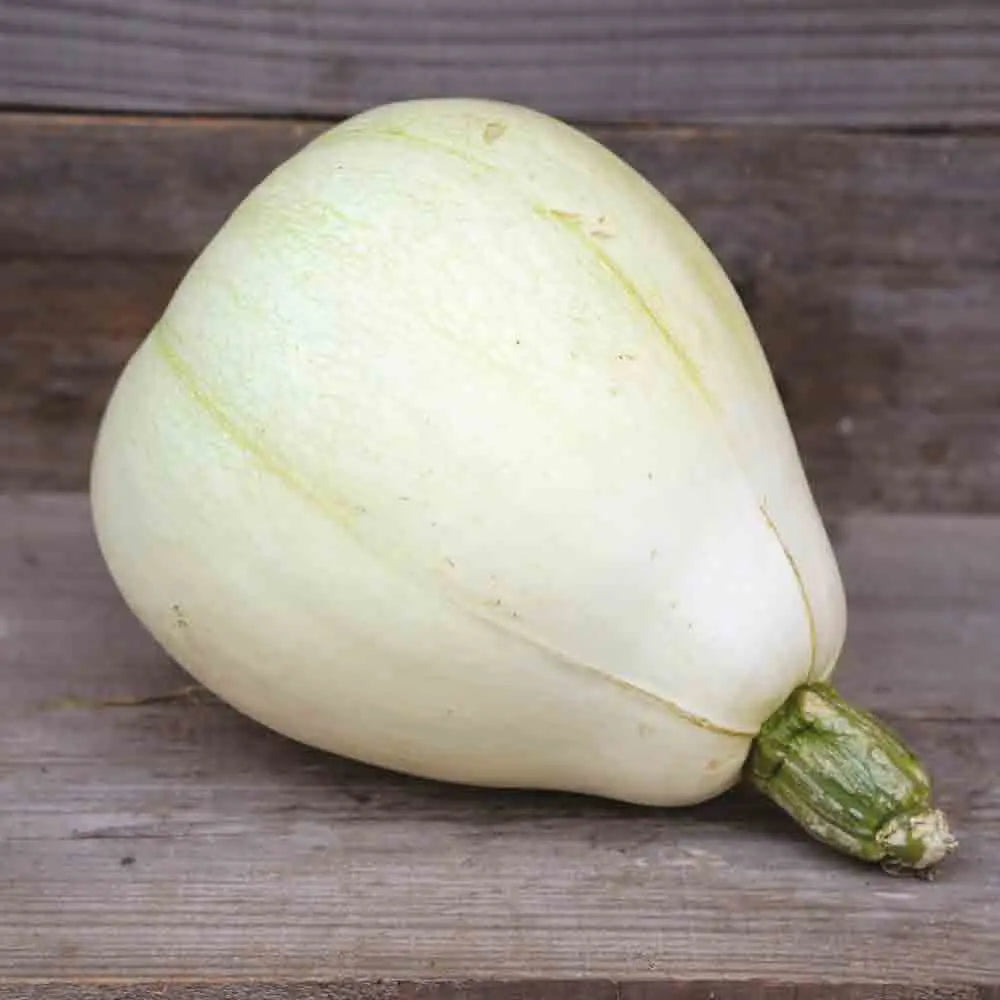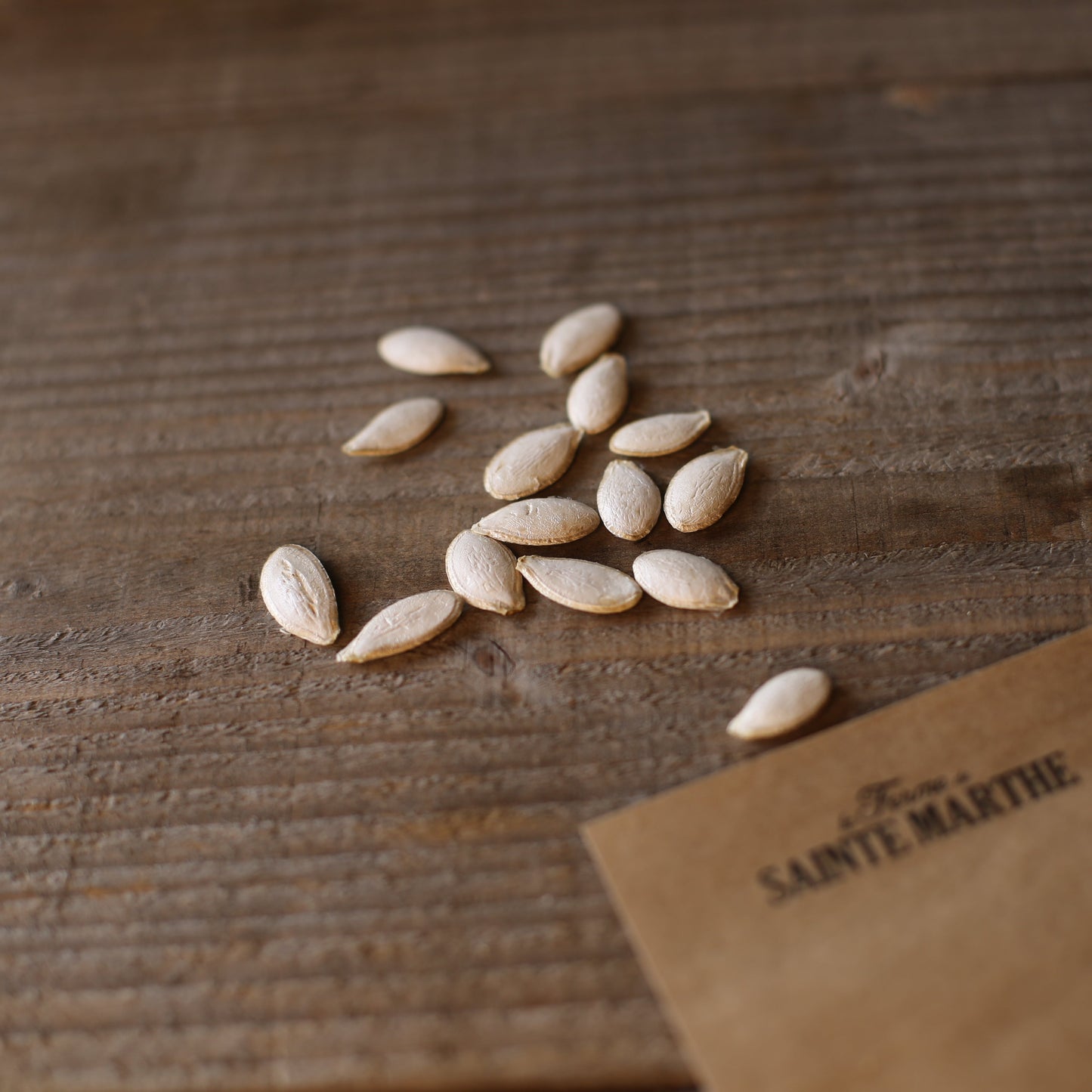TENNESSEE SWEET POTATO SQUASH AB
Cucurbita mixta
An old, hardy, productive, and vigorous variety, it grows in 95 days, producing cream-colored pear-shaped fruits with light green streaks. Fruits are about 25 cm long and weigh 2 to 5 kg. The thick, creamy, and very fine flesh has a flavor superior to that of sweet potatoes. It is perfect for cooking, especially for making pies and creams. It keeps very well: about 6 months. Cited as early as 1780, originating from Jamaica and cultivated by Thomas Jefferson in Virginia, it was quickly featured in American seed catalogs in the 19th century.
Synonyms: Genesee Sweet Potato', 'Virginia Sweet Potato', 'Sweet Potato'.
How to successfully sow Navajo calabacita squash
Sowing : in April, in pots in a light location (temperature 12°C), transplant in a sunny location in mid-May at 1 m in all directions for non-running varieties and 1.20 m in the rows and 2 m between rows for running varieties. Watering. Adding compost is recommended.
Navajo Calabacita Squash Cultivation
Plant out in a sunny position in mid-May, 1 m apart in all directions for non-running varieties and 1.20 m in the rows and 2 m between rows for running varieties. Compost is recommended. Pinch the stems to stimulate growth. Hoe and weed. Mulch the base to limit weed growth and preserve moisture. Water at the base in summer without wetting the foliage.
Good associations
Avoid placing it near potatoes. However, it will appreciate the proximity of beans and cabbage.
My pumpkin plant is not producing flowers or fruit.
This is a common problem encountered in many plants of the Cucurbitaceae family. High temperatures: in fact, it is very likely that the flowers borne by the feet are only male flowers (female flowers are differentiated by the presence of a swelling at the base, resembling a very young fruit). The high temperatures have affected the formation of female flowers and the quality of the pollen of the male flowers. Despite the presence of pollinating insects, there are therefore no fruits.
Lack of pollination: Pollination is carried out by pollinating insects moving from a male flower to a female flower. If your garden lacks these, then pollination and therefore fruiting will not occur. Attract pollinators near your cucurbit crops by sowing floral mixes, for example.
Harvesting and preserving squash
Between September and November, usually around October before the frost. One of the best ways to know when to harvest your squash is to observe the stalk, which turns corky when the fruit is ready.
Be careful, never pick up squash by this famous stalk because this would cause invisible lesions, which inevitably cause rot. The fruit should be cut as close as possible to the stem, left to dry for a day in the sun, then brought inside to a warm place, without knocking them of course, in a dry and ventilated place: between 12 and 20°C. For small quantities, the top of a cupboard or wardrobe in the house is ideal.









